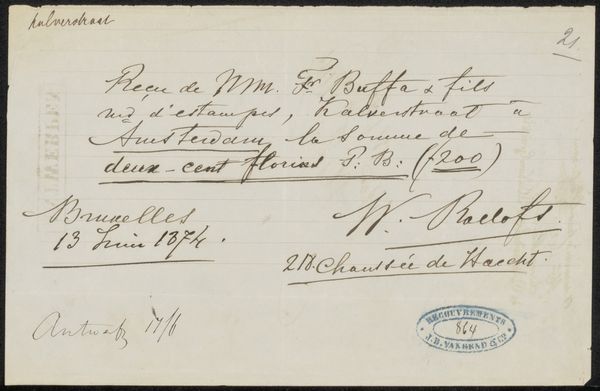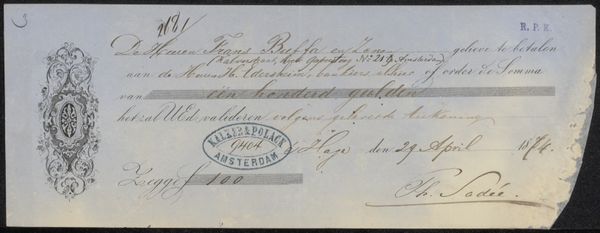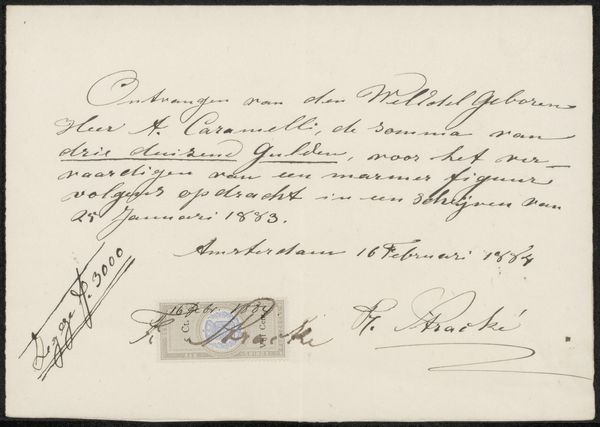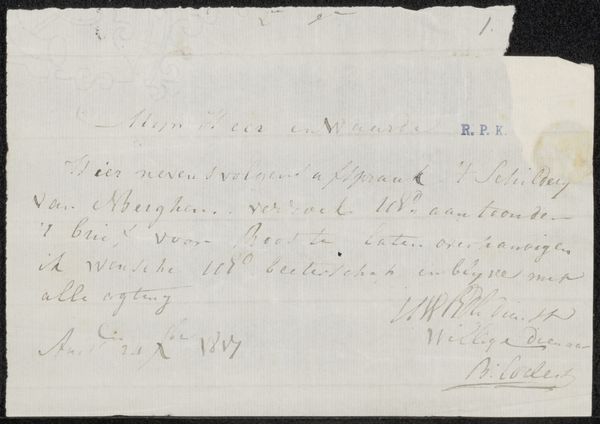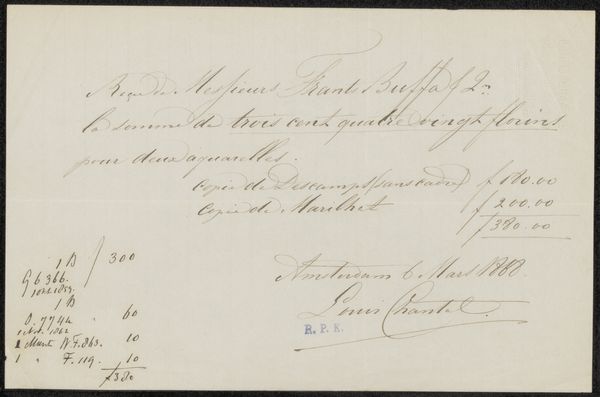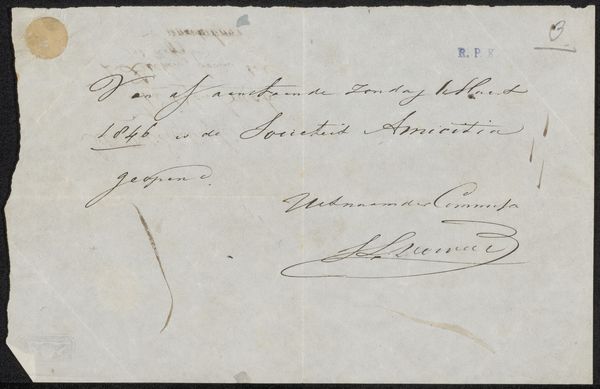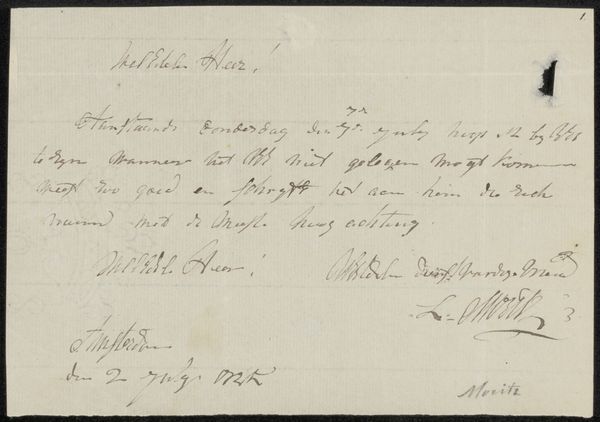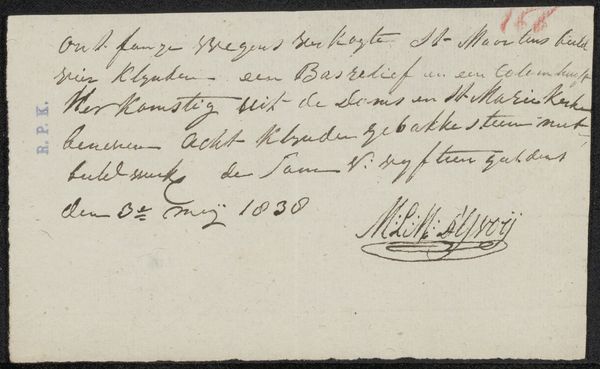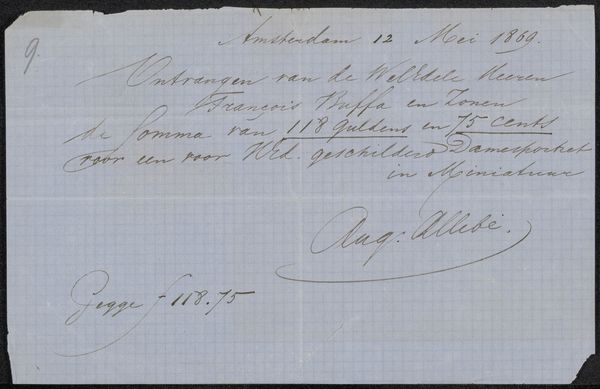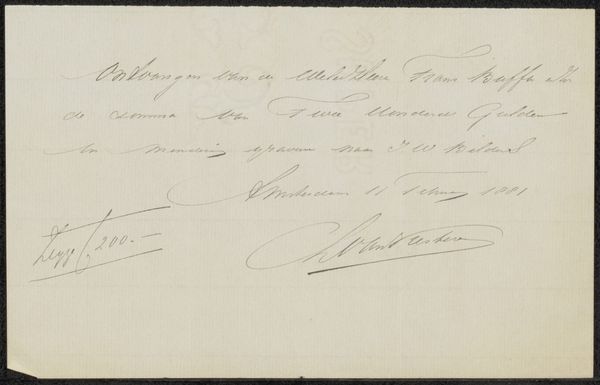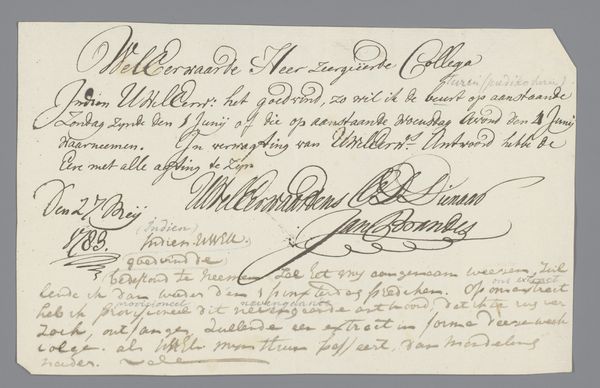
drawing, paper, ink
#
drawing
#
dutch-golden-age
#
paper
#
ink
#
calligraphy
Copyright: Rijks Museum: Open Domain
Curator: What a delightful piece of ephemera! We’re looking at a receipt, "Kwitantie voor Willem Roelofs (I)", likely from between 1874 and 1877, currently held at the Rijksmuseum. It’s ink on paper. It looks incredibly bureaucratic even if, technically, its style falls under what some have labeled Dutch Golden Age. Editor: My initial reaction is simply to admire the elegant calligraphy. It feels so… poised. Yet there's an inherent power dynamic visible here, a monetary transaction fossilized in elegant script, silently hinting at privilege. But perhaps it says something of class. After all, a farmer's receipt is handwritten while my lease agreement comes in all caps. Curator: Exactly! Frans Buffa en Zonen issued it. This isn’t just any scrap of paper; it's evidence of commerce and the art world connecting. Roelofs, the landscape painter, was clearly paying or being paid—it looks like a payment *for* an aquarelle to Buffa. Can't help thinking: where are the aquarelles they’re describing now, what stories they have to tell and will never tell me! Editor: And "deux cents florins"? A hefty sum, I'd wager, positioning art as a commodity even back then, interwoven within a complex socio-economic matrix. We've also the Amsterdam address proudly announced beneath Frans Buffa's stamp. These small textual clues offer insight into urban trade and social identity. Why emphasize that "Amsterdam" link unless this denoted greater authority and cultural cache? It seems innocent, a quick financial ledger. I can't ignore, however, how these "insignificant" economic structures cement class divides, defining what type of person had access to making art as well as affording to exchange. I am especially interested that they name the area where the shop exists. Who is this for? Did wealthy consumers recognize "Kalverstraat"? Curator: Oh, I totally agree. Every beautifully formed letter hides volumes of implied meanings. And I like how this unassuming thing forces me to ponder artistic legacy and those long-gone financial arrangements. It has a simple surface, but as we’re finding, holds countless echoes and stories. Editor: Ultimately, a potent reminder that even seemingly benign documentation is rife with power. Recognizing the receipt isn’t simply transactional. What if these pieces of accounting were positioned in the center as we understand artworks, giving them authority? What histories might arise and transform! Curator: You make me look at art so differently. Next receipt I come across, I will stare into its numbers, finding histories I never expected.
Comments
No comments
Be the first to comment and join the conversation on the ultimate creative platform.
